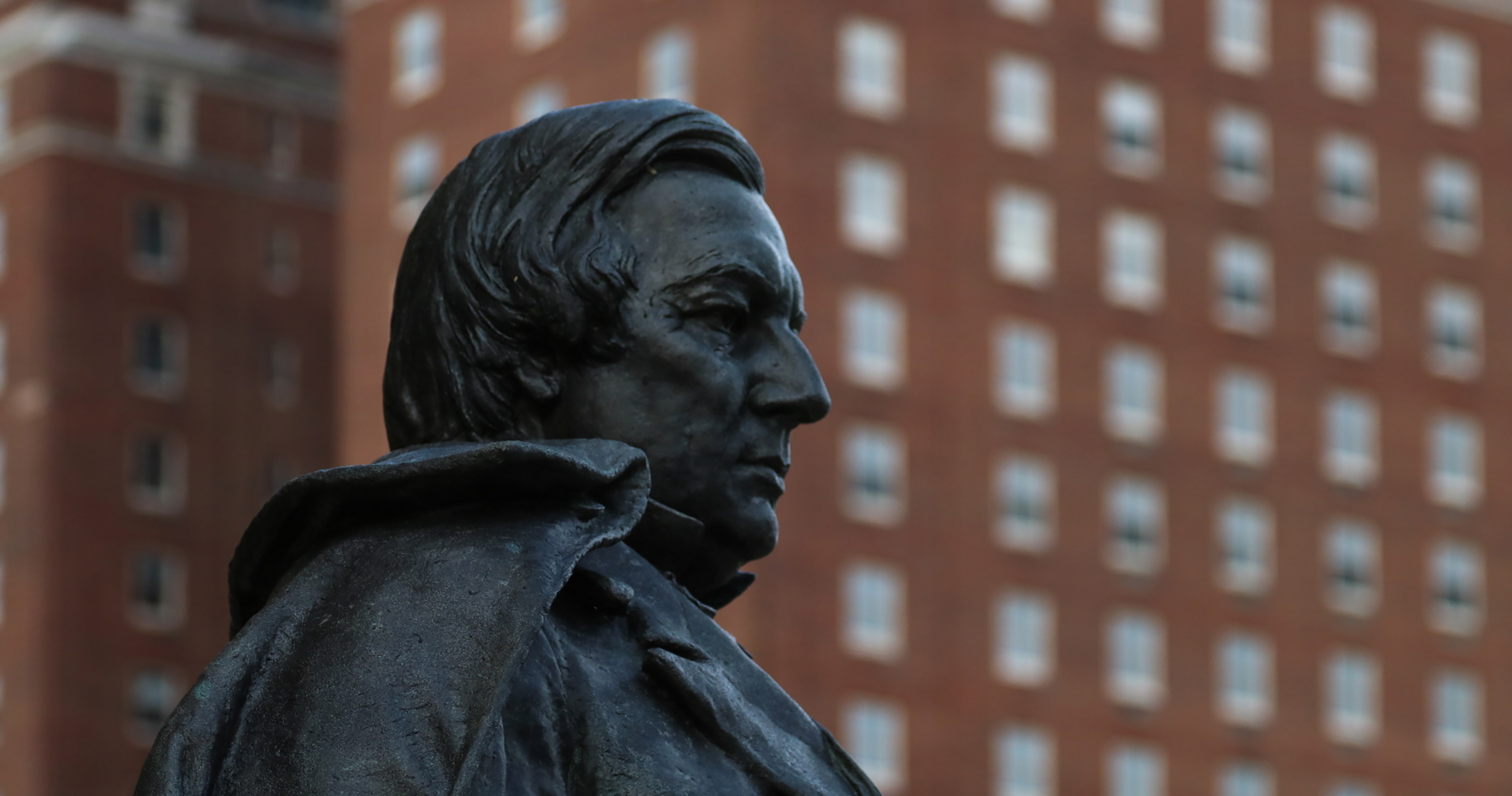Part of a complete article on Buffalo’s love affair with not so awesome old white dudes from Caitlin Hartney.
On October 2, 1851, Frederick Douglass’s abolitionist newspaper ran a scathing denunciation of then-sitting president, Millard Fillmore. The lede was prophetic:
“A curious task will be his who, in future time, attempts to write the history of the present administration. How shall it be known in history?”
It was a question to which the article put forth a caustic answer:
“Why as he goes home to Buffalo, mothers will bring their little children to see him, as he passes by, saying, ‘There he goes, the nigger-catching president.’”
Its author did not mince words, employing crude language in acerbic criticism of Fillmore’s support for and execution of the Fugitive Slave Act of 1850—a nefarious law that compelled Americans to aid in the capture of runaway slaves. In effect, Fillmore remanded hundreds of freedom-seeking black men, women, and children to the South, where hideous fates surely befell them.
Of course, that isn’t how we, residents of present-day Buffalo, remember Fillmore. Somewhere along the way, he traded the well-deserved mantle of slave catcher for that of illustrious local son.
Today, Fillmore’s name graces Western New York buildings and street signs, his bronze likeness stands sentinel before Buffalo City Hall, and each year on his birthday, leaders and officials gather in ceremony at his gravesite in Forest Lawn Cemetery. They are gestures of respect for the roles he had in establishing and advancing University at Buffalo, the Buffalo History Museum, the Buffalo Club, and other of the area’s important institutions. Meanwhile, his sins have been, by and large, ignored, in effect whitewashing the painful story of our incomplete progress toward a just and equal society.
Just as Confederate monuments have been catalyzing overdue conversations about our country’s deeply marred past, so, too, may Buffalo’s memorials serve as starting points of reckoning. Racism has never been proprietary to the South; Fillmore’s legacy ought to own up to that.




